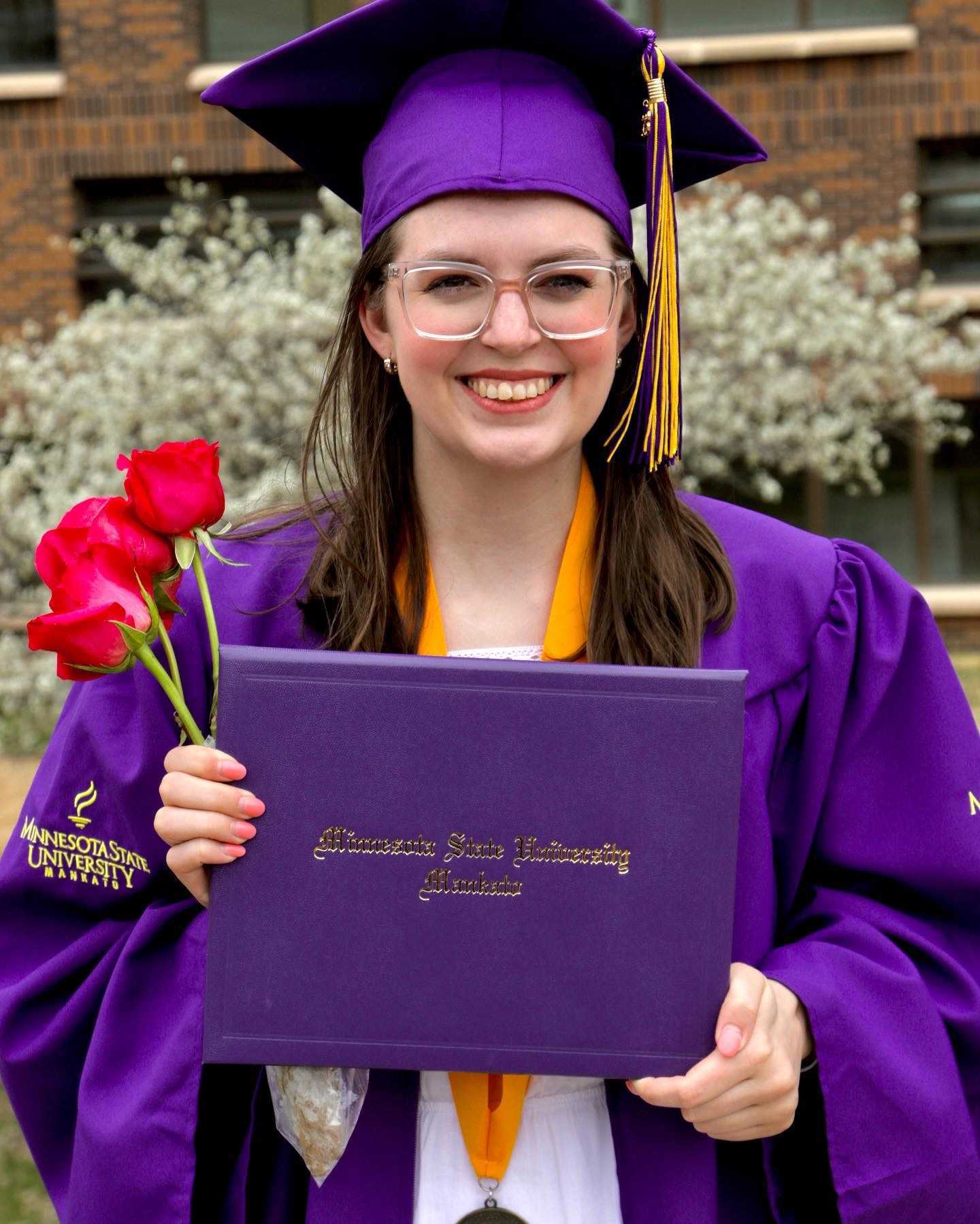Wrap-Around Support for Future Educators
Collaboration in the Classroom
As universities and K – 12 schools begin the school year, we reflect on the important role partnerships among student teachers, their mentor teachers, and supervisors play in the preparation of future educators. Read on to meet Claire Borne '23, who majored in Elementary Education. We sat down with Claire, her mentor teacher, and supervisor last spring to hear how their collaboration works to provide a meaningful experience.
Claire Borne '23, who majored in Elementary Education. We sat down with Claire, her mentor teacher, and supervisor last spring to hear how their collaboration works to provide a meaningful experience.
Kindergarten is such a fun grade to teach. Many of the students come into the classroom in the fall not knowing the alphabet, and they leave the following spring knowing how to read and write.
Claire Borne – a Minnesota State Mankato senior majoring in Elementary Education – has gotten to see that evolution firsthand this year at Kenny Community School in Minneapolis, where she has served as a student teacher alongside her mentor teacher, LuAnn Mishler.
“You can see a lot of growth between the beginning and end of the year in kindergarten,” said Borne, who plans to be a kindergarten teacher in the Twin Cities area after graduation this spring.
Mishler and Laurie Hanzal – an experienced supervisor who oversees mentor teacher and student teacher pairs – said the same kind of growth can be seen in student teachers from the start of their fall classroom placements to the end of spring term. The extent of it depends upon how much previous experience the student teachers have with children, Mishler said.
“Everyone comes in so differently,” said Mishler, who has been at Kenny for 14 years and has been a mentor teacher for 10 years. “The major thing just about every student teacher has had to work on is classroom management and building relationships with kids before you can start teaching them.”
Borne had a lot of experience, including teaching dance to children ages 3 to 8th-graders, as well as working at a daycare and summer camp, among other things. Still, she said the practical experience this year of learning to lead and manage a classroom of 23 students has been invaluable.
She’s learned to make sure the whole group is learning and how to target individuals to keep them on task. She’s learned to work alongside Mishler and coordinate with her teaching style. She’s also gotten to lead the class on her own.
“There was a day we did some testing. We were both in the room, but I did the majority of the teaching,” said Borne who attends the Edina campus.
Hanzal – who helps counsel Borne and has observed her in action as part of her role as supervisor – said she has been excelling in her role. She also demonstrated a lot of growth after her first semester.
“She’s learned to take it one direction at a time. She’s learned to slow down a bit. She was really fast at first, but she takes every piece of feedback so well,” Hanzal said. “She’s an awesome student teacher. She really wants to do well, and she’s super organized.”
Hanzal said the holistic approach of the co-teaching model between the mentor and student teacher is beneficial to both of them and to the students. The mentor teacher gets extra help in the classroom, the students have another teacher to help them, and the student teacher gains practical experience under an experienced professional educator.
Hanzal said her role is to observe and coach, talk about lesson plans the student teachers have developed, and to evaluate performance and progress. She’s there every step of the way, from the beginning when student teachers mostly observe to the end of the year-long placement when he or she is leading the classroom. The end goal is for the student teachers to be ready to set up and lead their own classrooms after graduation.
“We’re watching for teaching and classroom management strategies, and most of the time we’re watching to see what their students are doing – making sure they’re learning what the objective is, which is based on the grade level standard,” Hanzal said.
Mishler, a 1989 Minnesota State Mankato graduate, said having a student teacher like Borne in her room is a “win-win.”
“It’s fun to share the things you know about education with them, and it’s nice to have extra hands in the classroom as well,” she said.


